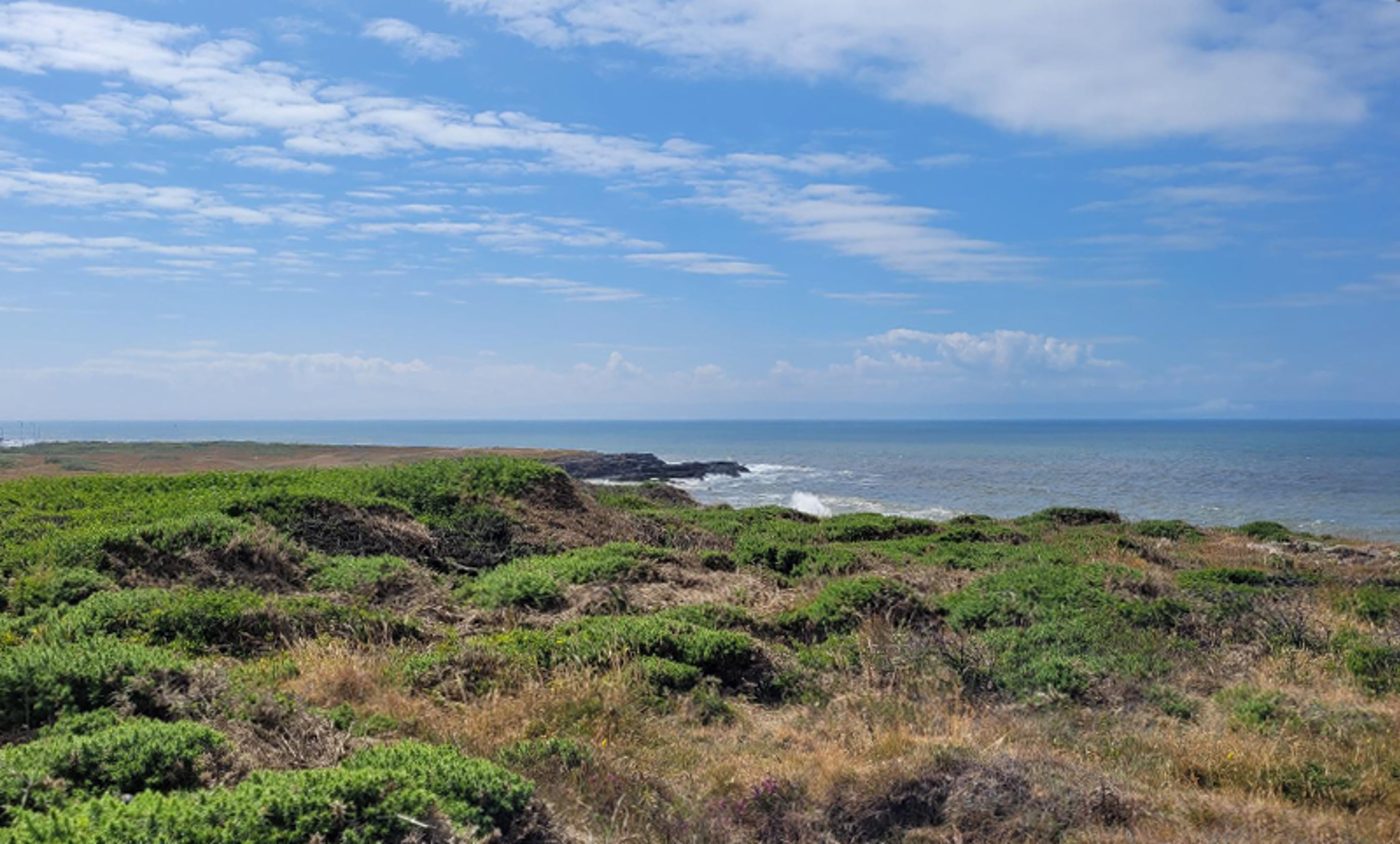Locks Common
Covering over 30 hectares of rugged, reasonably flat ground, Locks Common begins where the original Porthcawl promenade ended and stretches to Rest Bay beach.
This varied reserve supports a huge variety of birds, butterflies and wildflowers.
Locks common is a perfect place for walks with panoramic views of Rest Bay and the Bristol Channel. On a clear day, the Devon coastline and Swansea Bay can be seen in the distance.
Several footpaths cross the reserve. There are large areas of limestone pavement, but as it is uneven, it may be difficult for wheelchairs and pushchairs. In general, footpaths over natural areas may be muddy and uneven in parts.
The site’s limestone pavement is scattered over two hectares. An unusual feature in Bridgend County Borough’s nature reserves, it’s a habitat for species you’re unlikely to see elsewhere.
This important limestone feature means Locks Common is a Regionally Important Geological Site (RIGS) as well as a Local Nature Reserve.
Plant species:
- Bird’s foot trefoil
- Eyebright
- Heather
- Rock samphire
- Salad burnet
- Spring squill
- Squinancywort
Animal species:
- Blue tit
- Fox
- Harbour porpoise
- Kestrel
- Lesser black backed gull
- Robin
- Rock pipit
- Skylark
- Stonechat - These small birds flicker their wings while perched and are often seen on the tops of low bushes. As the name suggests, they utter sharp loud calls that sound like two stones tapping together.
Locks Common has a long history of sheep and cattle grazing.
It has also been used for military training, and before the first world war, it was a golf course.
The reserve begins at Porthcawl promenade, which was built in 1887 to celebrate Queen Victoria’s jubilee year.

Access is from the end of the promenade in Porthcawl town or from Rest Bay to the town’s west.
Public car parks are in Porthcawl town centre, and parking is available around Rest Bay.
